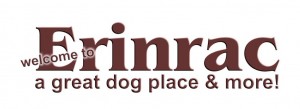Well into 2010 now, and with a major series on grooming to come (thanks to some great interviews under way), we have also been promised some other fascinating stories and articles too � so why not send in your own stories and pics, and snippets from the archives to share with other readers! (Substantial contributions gain free issues!).
I have at last seen the first press releases from the Clumber Spaniel Club of America�s International Committee, but only as a member of that club, it will be great to see how the committee interact with other national clubs and countries that don�t sport a Clumber club as they develop. The CSCA have certainly marched along relentlessly in the past few years with the establishment of some important and substantial sub-groups, to wit: the Clumber Spaniel Health Foundation and the club�s rescue/charity arm are now established and very active � great work � all for the benefit of the breed. It will be a grand day when other Clumber clubs are as broad and strong and can implement such powerful sub-structures.
In any case, it is the responsibility of all interested in the breed to continue to learn about basic health, genetics, conformation, care and promote these at all times. The breed is still not past being misrepresented as a slovenly couch potato (assuming he can still climb onto a sofa!), prone to drooling and excessive coat lose � such dogs are not what evolved from Clumber Park and cannot be considered healthy. I notice we also have the other extreme of looking for a very tight skinned, fine wiry individual occasionally being promoted as the �correct� type — neither the slovenly heaving lump of lard or the leotard clad hyperactive dart are what was evolved at Clumber Park, neither actually fit the current breed standard. We must let the pendulum ease back to the middle ground each and every time we are tempted to lean too far one way or the other in pursuit of a �point� or feature. Each of us can become blinded by a deep seated (and passionate) need to seek something in the next generation we perceive as lacking in the current dogs, and if we can�t see how far we have sought and achieved that extreme we are great risk of destroying many generations of great breeding skill we inherited. But worse, and unforgivable, is the damage we do to the individual we now present to the world a dog prone to discomfort and mocking by those who can see what we have done! Don�t think it doesn�t happen � if you do, you are too blind to what can and does happen and �cannot see the wood for the trees� – we are loosing overall perspective for focusing too much on �important� points. The only important point is a healthy dog that is comfortable and fit for purpose. That applies to all breeds and each individual within the breed, the breed is the result of very clever and successful selection for a dog that excels at his nominated work/function. True a Labrador can be a lap dog, a Cavalier can be a great flushing spaniel, but their form restricts their overall success. The Lab is a big dog on anyone�s lap, and rather heavy. The Cav will be battered and bruised working for more than an hour or so in the terrain of Clumber Park � besides he could be camouflaged in the undergrowth, lost, or accidentally shot. The form that evolved and was described in the first breed standards is in all likelihood the best form for that type of vocation. Sure, occasional tweaks have been necessary in some breeds to avoid the pendulum trying to swing up to 12 o�clock, but it has been tweaks. The original/early standards should be our benchmark for just about every breed.
I just want to say I have revamped how online (PDF) subscribers receive their issues, it will make it easier to collect their copies. This service will also be included free of additional charge for those who get the printed version and re-subscribe online, if you want to activate it before your renewal is due, please email me and I will set up your access.=
